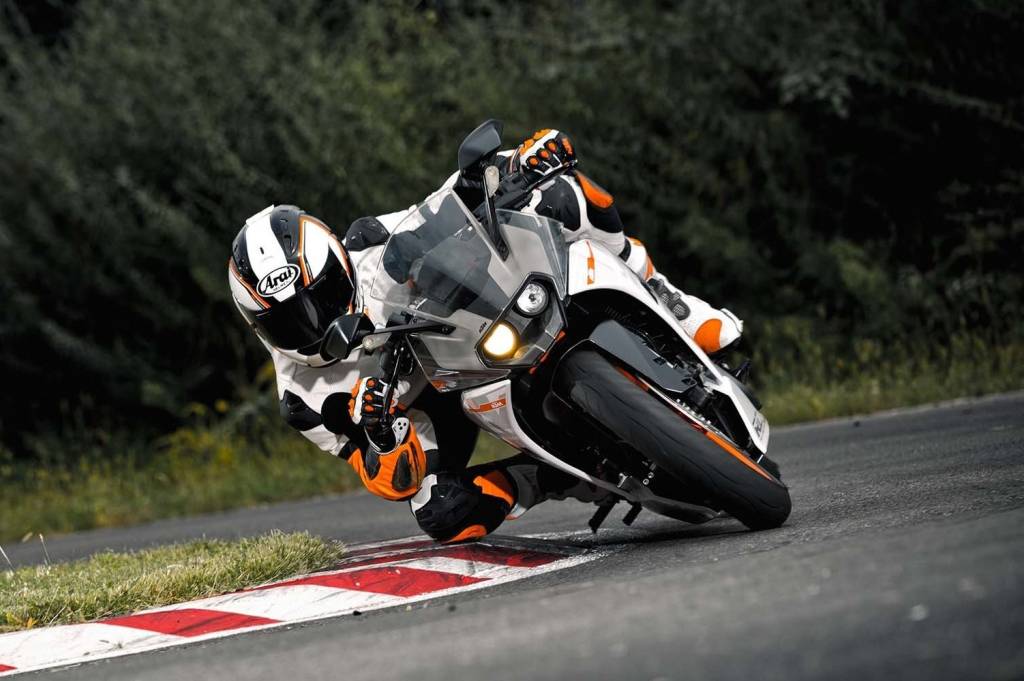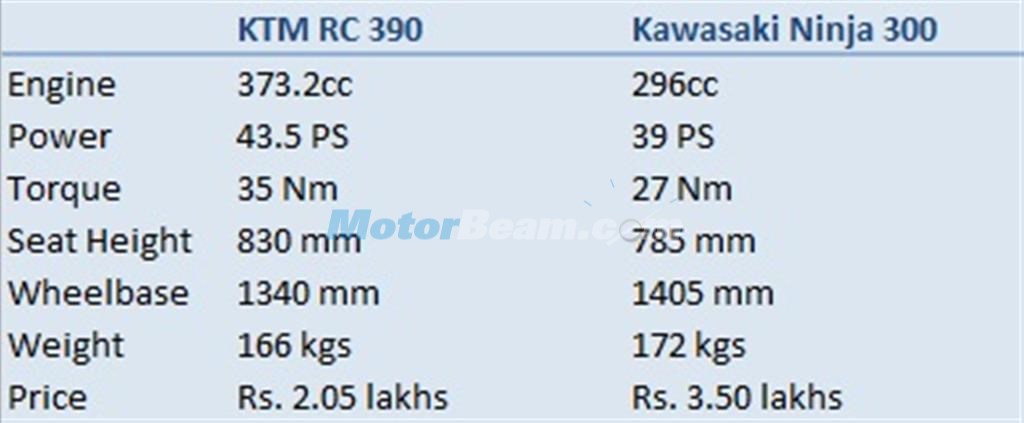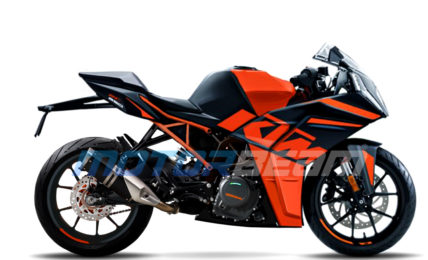The large capacity single feels more refined but heating is still an issue
Performance – At the heart lies the same 373.3cc, single-cylinder, liquid-cooled engine which caused quite a storm when it first made its debut in the Duke 390. KTM has made loads of revisions to the motor, to start off with, the 2017 RC 390 is now BS-IV compliant which has necessitated the use of a side-mounted exhaust, this one is an aluminium unit but still pushes up the weight by a good 7 kgs. To counter this, torque output of the 2017 KTM RC 390 has been bumped up by 1 Nm to 36 Nm while power is the same 43.5 PS. The result is the bike is similar in performance as the old model and doesn’t feel any slower (or faster). 0-100 km/hr comes up in a blistering quick 5.6 seconds while top speed is 179 km/hr.
In spite of the increase in weight, the RC 390 is as quick as before
The KTM RC 390 sounds slightly better than before but the difference is minor
The 2017 RC 390 does feel a lot smoother and refined, heating issue is still present in stop-go riding conditions but the heat is thrown away from the rider. The bike gets a new Bosch fuel pump with changed fuel pump pressure while vibrations have reduced thanks to rubber mounts on the fairing. The new exhaust makes the RC 390 sound slightly better than before. The company has given the India model Ride-By-Wire which makes on and off throttle transitions much smoother, there is also shorter travel of the throttle making it more fun when you want to redline the bike. The slipper clutch which was brought in last year, continues to be offered so there is a lot of tech on offer. The motorcycle returns between 20-25 km/l in real world riding conditions.
The RC 390 offers terrific handling with excellent feedback
Riding Dynamics – The KTM RC 390 is a fantastic handler with its top spec components that make it such a cornering delight. For 2017, the Katoom gets better clearance as the change in exhaust has resulted in a revised belly pan, thus it no longer scrapes when you corner hard, instead it’s the pegs which touch on extreme leans. In order to save on costs, the 2017 model gets low H rated Metzeler tyres (from W) which on a new bike did not show any significant difference in grip but as you ride and wear the rubber, the grip levels could reduce faster as these tyres are rated to 210 km/hr. The Austrian motorcycle now gets a wider front alloy wheel.
KTM has improved the braking and the RC 390 offers better stopping power
The KTM RC 390 is a rider’s delight around a race track with its stiff chassis set-up
Brakes of KTM bikes haven’t been great and although the 390s get ABS, they lack the initial bite. KTM has updated the brakes, the front disc is 20 mm bigger (320 mm), the front brake pad is sintered, the ABS sensor has been repositioned and the brake master cylinder size has been increased from 12 mm to 13 mm. The overall result is stronger braking performance and the RC 390 stops with more confidence. There is no Rear-Wheel Lift Mitigation (RLM) so when you brake really hard, the rear wheel does lift.




